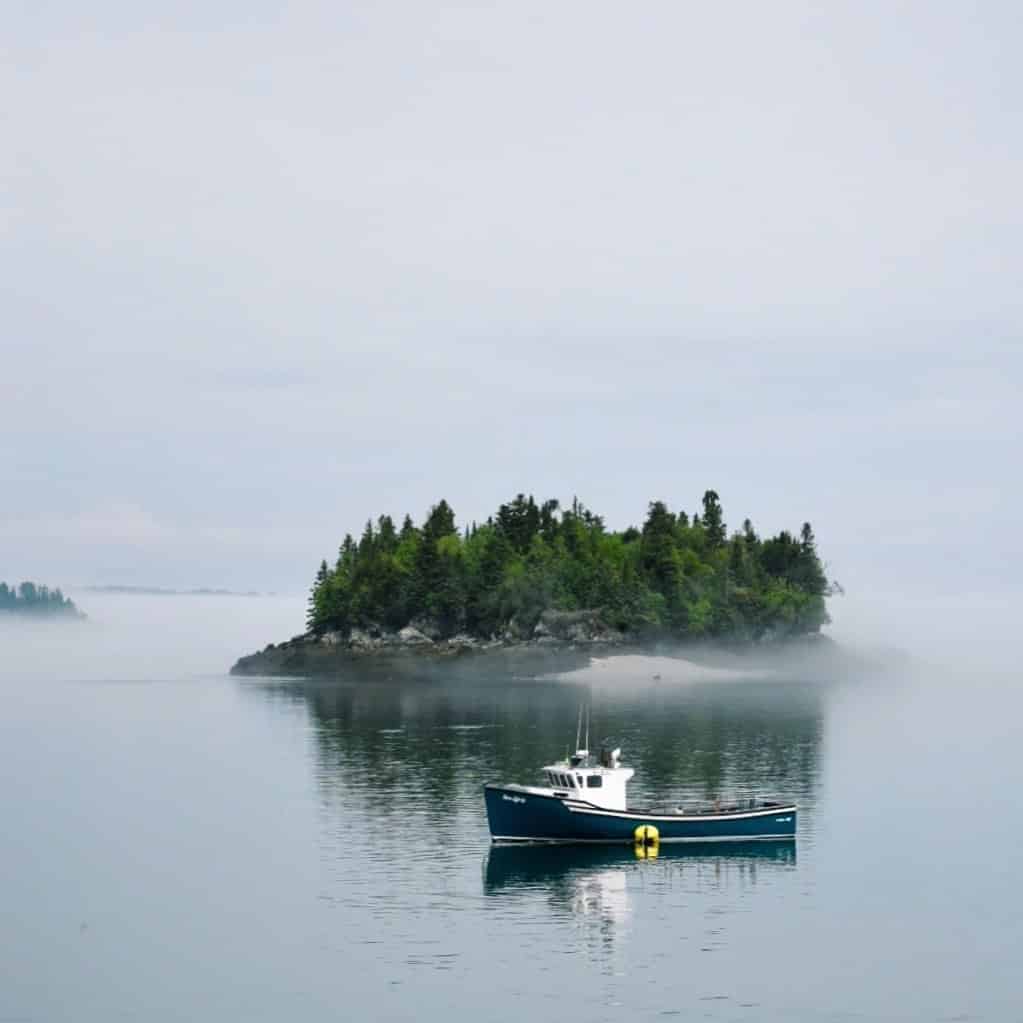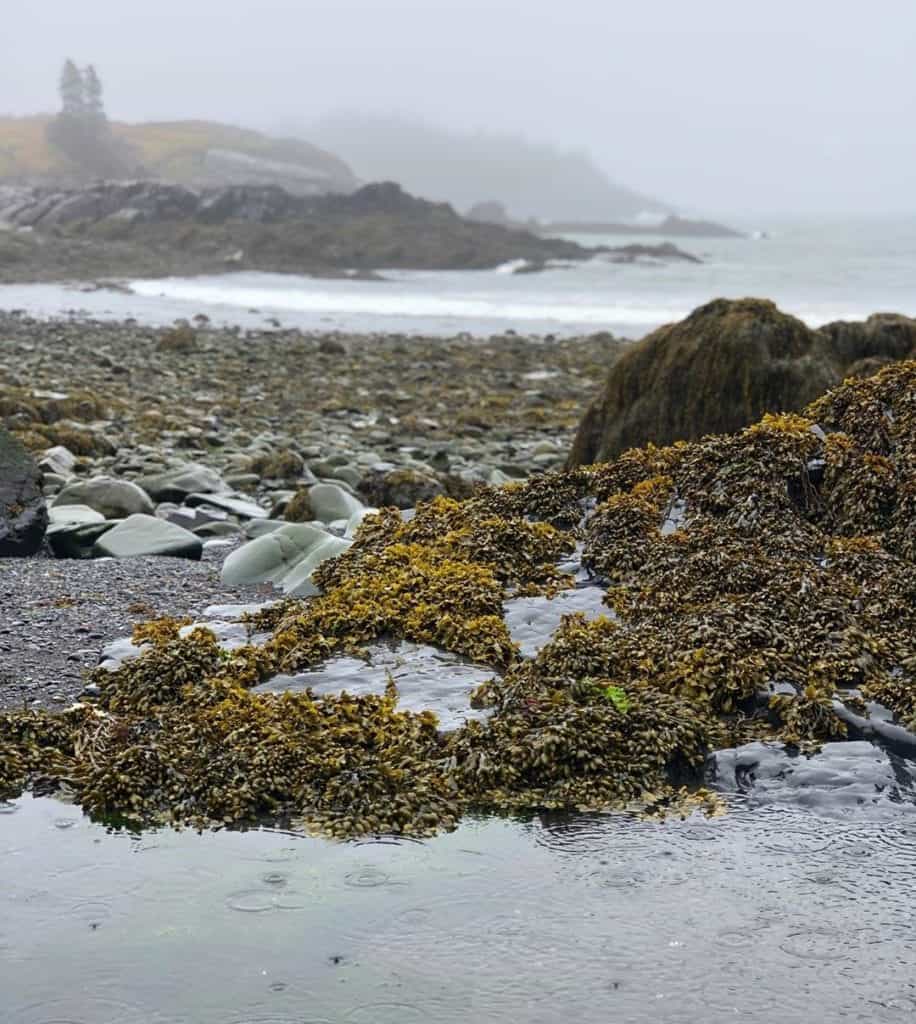Lucbec is the easternmost town on the continental United States.
These days, it seems more and more people are willing to go to the ends of the earth to find a spot where they can get away from it all and still have access to both creature comforts and rejuvenating experiences. While there aren’t all that many places that deliver the goods, Lubec, a remote fishing town on the east coast of Maine does—solitude and tranquility with access; fabulous rock, forest and water views; and restorative outdoor recreation.
This locale may not be at the ends of the earth, but it is at the end of the United States. In fact, it’s the easternmost town on the whole continent and is located right across the bay from Canada—New Brunswick’s Campobello Island is just a short ferry ride away. Looking for a destination that affords an easy two-nation vacation—Lubec’s your spot! But best of all, this town leaves out the things you’re trying to avoid these days while still offering many of the great things you expect from a restorative travel escapade.
Getting to Lubec doesn’t require that you get on a plane—the off-the-beaten-track journey makes for a fun nature-centric road trip, especially if you’re traveling along the east coast. Your car-based adventure will take you past many cool spots—pine forests, small towns and endless fields of wild berries. You can even stop by famed Acadia National Park and Cadillac Mountain along the way and, given its crushing crowds (3.5 million visits per year), fuel your appreciation of the calm and quiet that are to come. So, hop in the car and prepare to check off most everything on your idyllic waterside vacay checklist—one of them should be mouthwatering lobster rolls.
Gaining from Lack

Think about what you could easily do without—or even prefer to skip—when taking a vacation in a remote but invigorating place. For many, it’s the sort of attractions that bring them into contact with hordes of people and manmade noise, or the things that are easily found back home. Things like airports, movie theaters, amusement parks, fast food outlets, shopping malls and – perhaps worst of all – road congestion.
Well, guess what? Lubec doesn’t have any of these—and no traffic lights either. What it does have in the way of lights are lighthouses. Awesome ones. And plenty of other enticing features and experiences, too, such as a rugged coastline—97 miles of it, in fact; spectacular natural beauty, including coastal parks and preserves with jaw-dropping rocky promontories; year-round outdoor adventure activities (cycling, walking, hiking, birding, whale- and seal-watching, fishing and hunting, boating, snow-shoeing, ice fishing, cross-country skiing, snowmobiling)—not to mention thrillingly high tides (up to 25-foot tides from the Bay of Fundy enter the Lubec Narrows twice a day), abundant solitude and tranquility and a mysterious, captivating atmosphere that is sure to get under your skin—in a really good way.
Lubec History and Downtown
Settled in 1785, Lubec’s historical evolution and present personality center around its connection to the sea—fishing, ship building, trading and fish smoking were key industries. In the 1920s, at the peak of the fish industry, there were over 20 sardine canneries in Lubec and approximately 30 herring smokehouses, along with lumber wharves, ship chandleries and boat building yards.
Today, colorful wooden structures line the compact downtown. In addition to galleries, it features a variety of small businesses and cafes. The seafood here is among the best there is. And visitors can turn to Lubec Brewing Company’s pints (organic beers among them), light menu and live music help chase away any leftover road weariness.
Given its many charms, Lubec has seen an influx of artists and, as a result, vacationers can tap into their creative output, from concerts and theater to painting, sculpture and photography. Browse the small galleries and gift shops and visit the small historical museums (McCurdy Smokehouse Museum, a waterfront museum dedicated to the history of the smoke-herring trade is one of the few historic structures still standing in Lubec).
Bear in mind, everything shuts down early here—the better to relax, right? So regard the town as your chill base for exploring the Down East area of Maine and venture out along the Bold Coast, easily accessed from the Bold Coast Scenic Byway that extends 125 miles along the coast, from Gouldsboro to Calais.
Lubec’s Lighthouses and Parks

Lubec is lighthouse central. So, if you’re a fan of these unique coastal structures, a Lubec sojourn is sure to put a smile on your face. The most famous of the area’s lighthouses is West Quoddy Head, the easternmost lighthouse in the U.S., built in 1808 and painted in bold red and white stripes—the candy-striped pattern makes for great Instagram posts. Just think—this is where the nation sees its first sunrise.
While you can’t ascend the tower, you can visit the Visitor Center Museum inside the attached Light Keepers’ house and then hike on the 4.5 miles of trails in the surrounding park.
Quoddy Head State Park
The 541-acre park next to the lighthouse contains forests, bogs, a cobblestone beach, a rare plant habitat and knock-your-socks off water views along the coastal cliffs—you’ll probably even see some whales below.
Other lighthouses you’ll want to check out: Lubec Channel Lighthouse located in the channel between Lubec and Campobello Island, and the Little River Lighthouse situated on a 15-acre island off nearby Cutler, at the entrance to Cutler Harbor. And get this—you can book an overnight stay at this lighthouse!
Hamilton Cove Preserve

This Preserve is another terrific hiking (and in winter, cross-country skiing and snowshoeing) area with four beautifully maintained trails, each providing a distinctive experience: Coastal Trail provides expansive views toward Grand Manan Island. Beach Trail leads to a pebbly beach at the water’s edge. Meadow Trail takes walkers through a lovely open meadow down to the water. And Benny’s Mountain Trail, the only inland one here, goes through an open field, an old-growth forest and, finally, across rocky terrain up to a mountain summit that offers views of Lubec and its surroundings. In this Preserve, you’ll get to see the wild and rugged landscapes—sheer cliffs and rock outcroppings—that Maine’s Bold Coast is known for, as well as a huge variety of plants, soaring Bald Eagles and even prowling Harriers.
Boot Head Preserve
Stunning and private, Boot Head is known for some of the most dramatic scenic coastal vistas in all of Maine as well as incredible birds—here, you can sight spruce grouse, bald eagles, black guillemots, common eiders and a wide variety of songbirds. It’s a great place for a picnic, so pack up a seafood lunch before hitting the preserve’s gently rolling trails or head out much earlier to catch a spectacular sunrise over the Grand Manan channel. If you come in winter, an unparalleled wonderland awaits you—take it in by snowshoe.
Take a Whale, Seal and Puffin-Watching Tour—and Ride on a Gigantic Natural Whirlpool
The Lubec area is known for its magnificent whales and nesting puffins. Whales (finback, minke, humpback and Northern Right) spend the summers feeding near shore, seals swim in the narrows between Lubec and Campobello Island, and puffins nest along the rocks. It’s well worth taking a chartered boat trip to see the extraordinary native wildlife—and also ride on “Old Sow,” the largest natural whirlpool in the Western Hemisphere. You simply can’t leave the area without experiencing this huge area of natural turbulence and the pig-like sounds it emits.
Campobello Island—Site of the Only International National Park
It’s easy to hop over to Canada from Lubec—just take the ferry to Campobello Island in New Brunswick, home to Roosevelt Campobello International Park. Here, visit the site of the magnificent former summer home of President Roosevelt and his family, and walk or drive around on scenic trails.
Have you ever been somewhere that felt like “the ends of the earth?” Tell us about it below in the comments!
